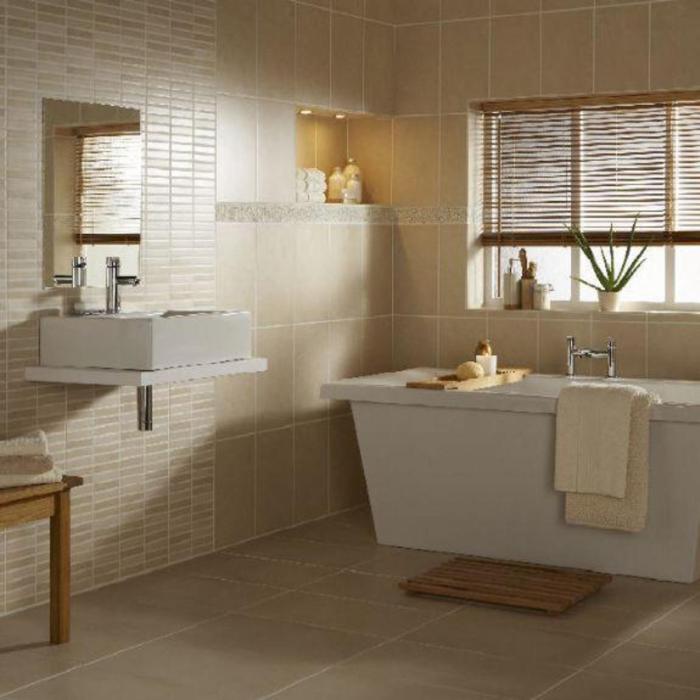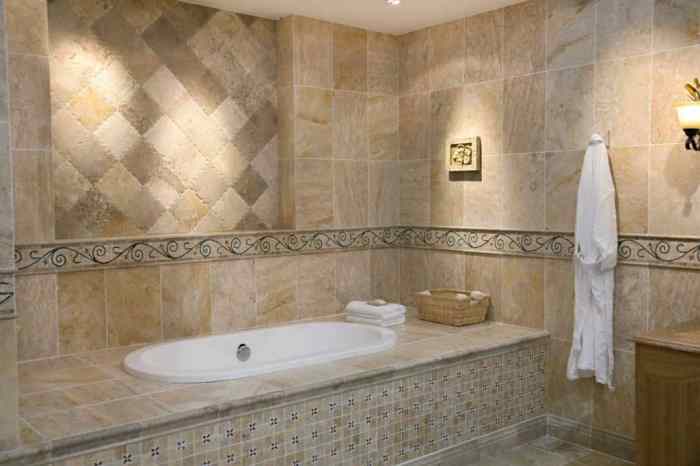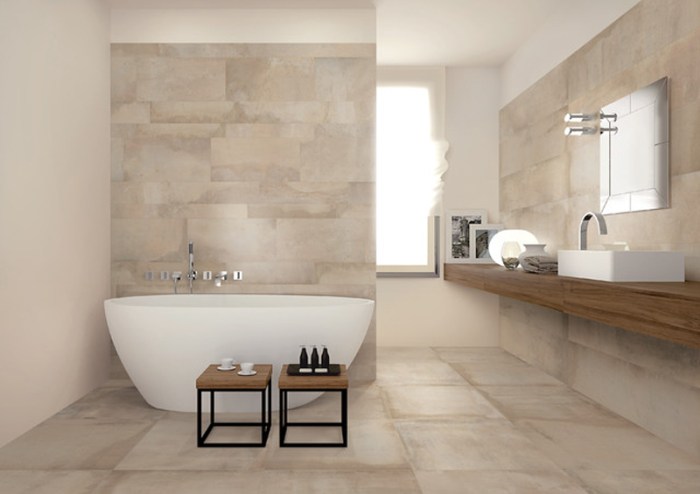The bathroom, a sanctuary of relaxation and rejuvenation, deserves a design that exudes both style and functionality. Matching bathroom floor and wall tiles plays a pivotal role in creating a cohesive and visually appealing space that reflects your personal taste and enhances the overall ambiance.
This guide will delve into the intricacies of matching bathroom tiles, providing expert insights on color coordination, pattern and texture considerations, size and scale, material options, and the importance of grout and other design elements. By understanding these key factors, you can transform your bathroom into a space that is both aesthetically pleasing and tailored to your unique needs.
Pattern and Texture Considerations
The interplay of patterns and textures can profoundly impact the aesthetics of a bathroom, transforming it from a functional space into a visually captivating retreat. Patterns can create focal points, delineate areas, and introduce a sense of movement and dynamism.
Textures, on the other hand, add depth, warmth, and tactile appeal, enhancing the overall ambiance.
Using Patterns to Create Focal Points
Bold, eye-catching patterns can draw attention to specific areas of the bathroom, creating a visual hierarchy. Consider using a statement tile pattern on the floor of the shower or behind the vanity to create a striking focal point. Alternatively, incorporate patterned wallpaper or accent tiles on a single wall to add a touch of drama and personality.
Choosing Textures to Enhance Ambiance
Textures can enhance the mood and ambiance of a bathroom space. Smooth, polished tiles create a sleek and modern look, while textured tiles with a rough or tactile surface add warmth and rustic charm. Consider combining different textures, such as smooth marble tiles with textured stone tiles, to create a layered and visually interesting effect.
Size and Scale
The size and scale of tiles play a significant role in creating different design effects in a bathroom. Larger tiles can make a small bathroom feel more spacious, while smaller tiles can add intricate details and create a more intimate atmosphere.
Selecting the Right Tile Size
When selecting the size of tiles for your bathroom, it is important to consider the dimensions of the room. For smaller bathrooms, larger tiles can help to create a more open and airy feel. In larger bathrooms, smaller tiles can add visual interest and create a more intimate space.
Large Tiles
- Create a spacious feel in small bathrooms
- Make the room appear larger and more open
- Can be used to create a more modern or minimalist look
Small Tiles
- Add intricate details to a bathroom
- Create a more intimate and cozy atmosphere
- Can be used to create a more traditional or vintage look
Mixing Tile Sizes
Mixing different tile sizes can create a unique and visually interesting look in a bathroom. For example, you could use large tiles on the floor and smaller tiles on the walls, or use a combination of different sizes and shapes to create a mosaic effect.
Material Options
When selecting bathroom floor and wall tiles, the choice of material is crucial. Different materials offer varying degrees of durability, water resistance, and aesthetic appeal. Here’s a breakdown of the most commonly used materials:
Ceramic Tiles
- Advantages: Affordable, durable, water-resistant, and available in a wide range of colors and designs.
- Disadvantages: Can be susceptible to chipping and cracking if not properly installed.
Porcelain Tiles
- Advantages: Highly durable, water-resistant, and less prone to chipping and cracking than ceramic tiles.
- Disadvantages: More expensive than ceramic tiles and can be heavier.
Natural Stone Tiles
- Advantages: Unique and luxurious appearance, highly durable, and water-resistant.
- Disadvantages: Expensive, can be difficult to install, and may require sealing to maintain water resistance.
Glass Tiles
- Advantages: Adds a touch of elegance and style, easy to clean, and water-resistant.
- Disadvantages: Can be expensive, may require specialized installation, and can be susceptible to scratching.
When choosing the right material, consider the specific needs and preferences of your bathroom. For example, if durability and water resistance are priorities, porcelain tiles might be a suitable choice. If you prefer a unique and luxurious look, natural stone tiles could be an option.
Ultimately, the best material for your bathroom will depend on your individual requirements and budget.
Grout and Other Design Elements
Grout, the material that fills the spaces between tiles, plays a significant role in completing the overall design of a bathroom. It not only provides structural support but also influences the aesthetics of the space.
Different types of grout offer varying finishes and textures. Sanded grout, with its coarse texture, is ideal for larger tiles, while unsanded grout, with its smooth finish, is suitable for smaller tiles or areas that require a more polished look.
Grout Color and Texture
Selecting the right grout color is crucial for creating a harmonious bathroom design. Neutral shades, such as white or gray, complement a wide range of tile colors and styles. Contrasting grout colors can create a striking effect, highlighting the tile pattern or adding a touch of color.
The texture of the grout can also impact the overall look. A smooth grout finish provides a clean and modern aesthetic, while a textured grout can add depth and interest to the design.
Incorporating Other Design Elements
Beyond grout, there are various other design elements that can enhance the visual appeal of a bathroom:
- Borders: Decorative borders can frame the bathroom walls or floor, adding a touch of elegance.
- Mosaics: Mosaic tiles, often made of glass or ceramic, can create intricate patterns and add a touch of color and texture.
- Accent Tiles: Accent tiles, used sparingly, can add a focal point or draw attention to a specific area of the bathroom.
Outcome Summary
Matching bathroom floor and wall tiles is an art form that requires careful consideration of various factors. By following the principles Artikeld in this guide, you can create a bathroom that is both functional and visually stunning. Remember, the ultimate goal is to design a space that reflects your personality and provides a sanctuary of relaxation and rejuvenation.



